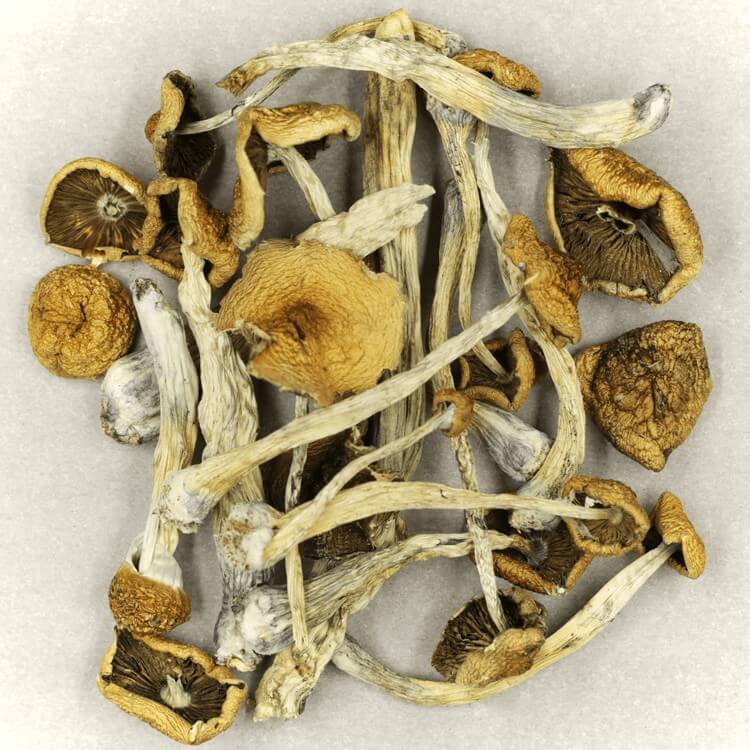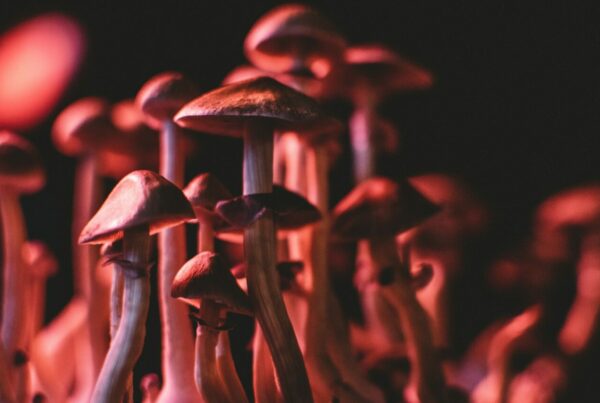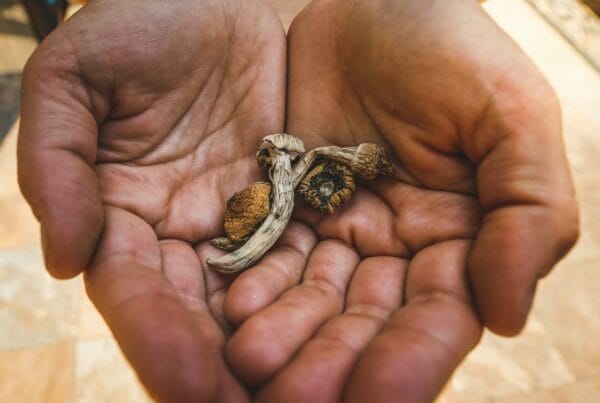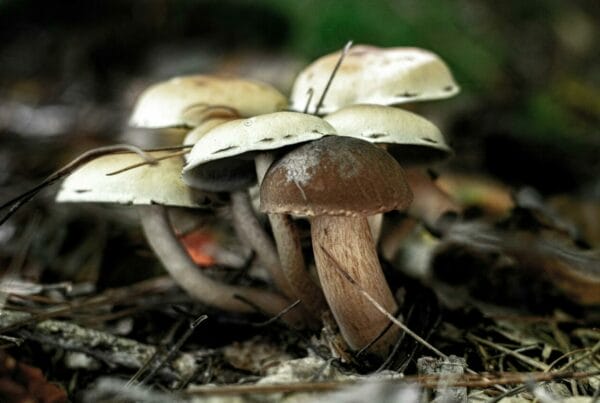Once thought to be purely fantastical, the strength of Psilocybe mexicana has gained recognition due to extensive psilocybin research. Consistent findings about its therapeutic properties by the psychedelic research community have gradually led to its acknowledgment in the medical world. The burgeoning field is seen as promising by experts, who are constantly working to determine safe dosages for medical application.
Key Takeaways
- Researchers have utilized innovative techniques like liquid chromatography and tandem mass spectrometry to gauge the strength of mushrooms.
- Psilocybe Mexicana, along with other types of mushrooms, is being scrutinized in clinical trials for potential therapeutic applications.
- Understanding the genetic diversity in magic mushrooms is crucial for defining an accurate dosage guide.
Psychedelic Mushrooms: From Unknown to Scientific Discoveries
In the past, only a few conditions were known to benefit from Psilocybe Cubensis. Nowadays, psilocybin is making considerable progress in revealing its concealed medicinal capabilities.
Specialists are exploring the potential of Psilocybe Mexicana and other powerful strains for extensive research and clinical trials. Regardless of the subjects being in vivo or in vitro, this strain effectively displays the greatest effects and benefits of the fungus species.
Psychedelics Penetrating the Market
From being veiled to being in the spotlight—ongoing advancements and discoveries are increasingly captivating the attention of the public, especially those seeking therapeutic solutions. Traditional mental health treatments often leave much to be desired, leading individuals to search for more effective alternatives.
Enter magic mushrooms.
Patients grappling with mental health disorders are turning to psilocybin, which has demonstrated potential in treating depression, alcohol addiction, anxiety, compulsions, tics, chronic pain, and more.
Currently, medical practitioners are investigating innovative ways to accurately determine the most beneficial dosage for safe patient administration. A research group from the University of Texas has notably created a model to extract psilocybin and psilocin concentrations.
The potency of magic mushrooms can indeed be clinically established.
Mexicana’s Unique Traits
The species of Golden Teachers, Blue Meanies, and B-Plus mushrooms have been thoroughly examined. For a more comprehensive understanding of safe magic mushroom usage, it is crucial for researchers to investigate other species as well.
The Mexicana species has emerged as a prime candidate for research, due to being one of the most ancient species and its relatively lower potency increases the likelihood of it conforming to medical drug standards.
Although the potency of this Mexican strain is less severe than other species, it has the potential to generate similar effects as mainstream strains. With the growing popularity of microdosing among patients, this strain stands out as a preferable choice.
Consistent levels of psilocybin and psilocin are found in this strain, just like in others. So, what makes it a preferred choice over other comparable strains? Its historical and anthropological importance provides the explanation.
Delving into a Rich Mexican Heritage
Psilocybe mexicana, in ancient times, naturally proliferated in moss. These psilocybin mushrooms were venerated by indigenous people for their versatile uses, often linked with mystical or supernatural occurrences.
Let’s shift our focus to Mexican mushrooms. Over two millennia ago, the initial documented usage of these mushrooms was by the indigenous people of North and Central America. The Aztecs, an ancient civilization, termed these mushrooms as the “food of the Gods,” or “teonanácatl” in their indigenous language.
If the Aztecs were alive today, they would vouch for the transformative, emotionally potent, and mentally steadying effects of the Mexicana—even without comprehending these modern terminologies.
Despite various cultivation methods, this mushroom has managed to preserve its natural psilocybin concentrations, signifying its authenticity. This genuineness is a universal standard that both researchers and psychedelic research institutions greatly appreciate.
Innovative Techniques for Testing Psilocybin Content and Potency
A team of ten researchers from the University of Texas at Arlington and other research institutions have devised a new method to test the potency of psychoactive compounds in mushrooms. This new method amalgamates liquid chromatography and tandem mass spectrometry.
Here are two avant-garde techniques:
- Liquid chromatography is a technique utilized to classify and examine chemical combinations. It is employed specifically for the active chemicals present in mushrooms. The method requires the passage of a liquid specimen through a column filled with a solid substance known as the stationary phase. The diverse chemicals in the sample interact differently with the stationary and mobile phases, causing them to separate at various rates as they traverse through the column.
- Spectrometry typically investigates the interaction between matter and electromagnetic radiation across multiple wavelengths. It identifies and measures substances based on the unique wavelengths of light that molecules absorb and disperse. This enables the determination of the electronic, vibrational, and rotational states of the chemical.
This technique was employed on five strains of magic mushrooms. The researchers found that the average total levels of psilocybin and psilocin among these strains varied from 0.879 to 1.36. These concentrations exceeded numerous varieties, including Bull Run and Cambodian. They validated the precision of their study by comparing their findings with those of other independent laboratories.
The consistency of the results between the two laboratories further corroborated the accuracy of their testing procedure in determining the potency of the mushrooms accurately.
If confirmed by experts, this could pave the way for new methodologies in the existing psychedelic potency testing techniques, serving as an additional safety measure to prevent incorrect dosage determinations.
Expanding Research to Other Species
Widening the research to other species is advantageous. It can improve our knowledge of the health benefits linked to different strains, and offer foundational data on the effects of less potent mushrooms.
Moreover, it can assist in educating individuals about the impact of various dosages on the psychedelic experience. By comparing Mexicans with more potent strains like Psilocybe Cubensis, researchers can understand how different concentrations of active compounds can affect therapeutic results.
For instance, the Blue Meanies strain generates stronger hallucinogenic effects, which could potentially be effective for treating conditions like depression. Alternatively, the latter is more suitable for microdosing or subtler applications such as mood enhancement or focus improvement.
Variations in Genetics Contribute to Safer Treatments
It’s not widely known that distinct cultivars or varieties possess unique genetic profiles and
Each type of psychedelic mushroom varies in potency, chemical composition, and effects. This diversity allows healthcare providers to select the most fitting variety for specific medical applications and customize doses to meet individual requirements. This approach minimizes potential risks and maximizes benefits.
Take, for instance, Psilocybe Semilanceata (Liberty Caps) or Psilocybe cyanescens. Each has a unique alkaloid profile that might be efficacious in managing anxiety. On the other hand, synthetically grown mushrooms could be better suited for addressing substance abuse or compulsive behaviors. This diversity allows for the development of personalized treatment plans that enhance safety and efficacy.
From this, we can infer that the genetic diversity in psychedelic mushrooms, when merged with novel methods of potency assessment and identification, is pivotal for devising safer medicinal treatments.
Enhanced Safety in Medical Applications
Let’s contemplate the potential benefits of safer dosage practices.
- Decreased overdosing incidents: Accurate dosing eliminates the risk of overdose. It also means that product labels should be more explicit to avoid customer misunderstanding.
- Improved predictability: With precise dosing, individuals can better predict what effects or experiences they might encounter during their trips. This reduces overwhelming feelings and anxiety, thereby enhancing patient satisfaction.
- Uniform measurement: Precision in dosing can encourage a standardized measurement system, allowing individuals to easily refer to charts for potential effects.
Experience the Advantages of Accurate Dosing with Potent Shrooms through Advanced Testing | Shop for Magic Mushrooms Online at Fungalfriend Canada
If these two advanced methods continue, you won’t have to worry about unforeseen effects. Couple this with smart online shopping at Fungalfriend Canada. We offer dried mushrooms that provide a serene, relaxing psychedelic experience without overwhelming psychoactivity. Buy psychedelics online in Canada via Fungalfriend Canada.
Frequently Asked Questions
Does the Mexico Psilocybe Mexicana resemble the Big Mexicans?
No, Big Mexicans and Psilocybe Cubensis are separate strains of mushrooms, so it’s crucial not to confuse them. Big Mexicans have a higher compound concentration, ranging from 0.5% to 1%, making them significantly more potent.
The appearance of Psilocybe Mexicana and Psilocybe Cubensis varies, with the former often sporting a bell-shaped cap and the latter usually adopting a conical shape.
What is the peak concentration of psilocybin in Mexican mushrooms?
Psilocybin and psilocin concentrations in Mexican mushrooms can reach a maximum of 0.25%. Although these levels are comparable to the Golden Teacher strain and are relatively low, they can still provoke powerful psychedelic experiences, which may potentially offer health benefits.
What is the recommended medicinal dosage?
Generally, a dosage between 1 to 2 grams is recommended. However, this can be influenced by factors such as the method of consumption, individual metabolic rate, and the specific strength of the strain. Some individuals opt to take lower doses, from 0.05 (50mg) to 0.025 grams (250mg), to mitigate the hallucinatory effects.





